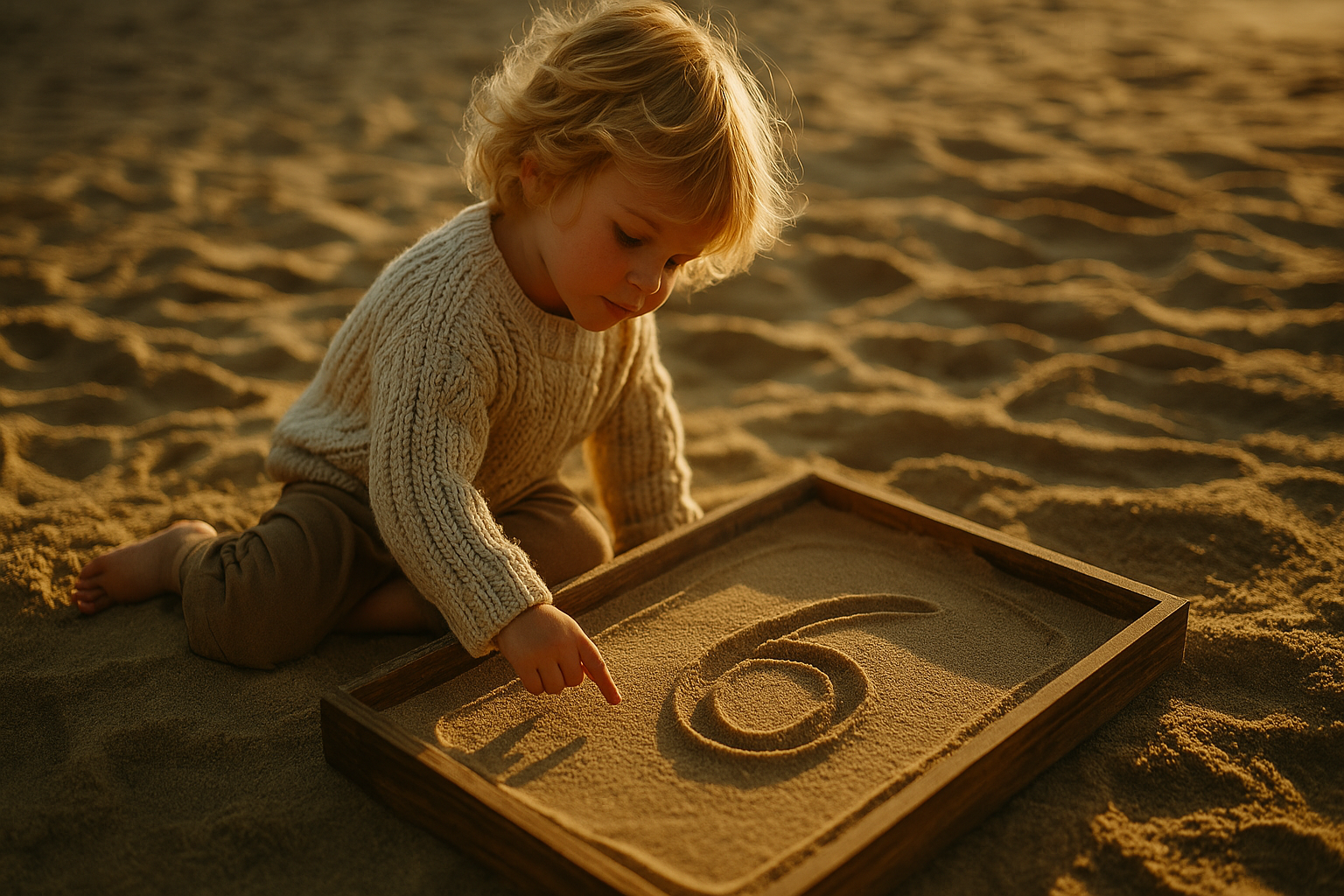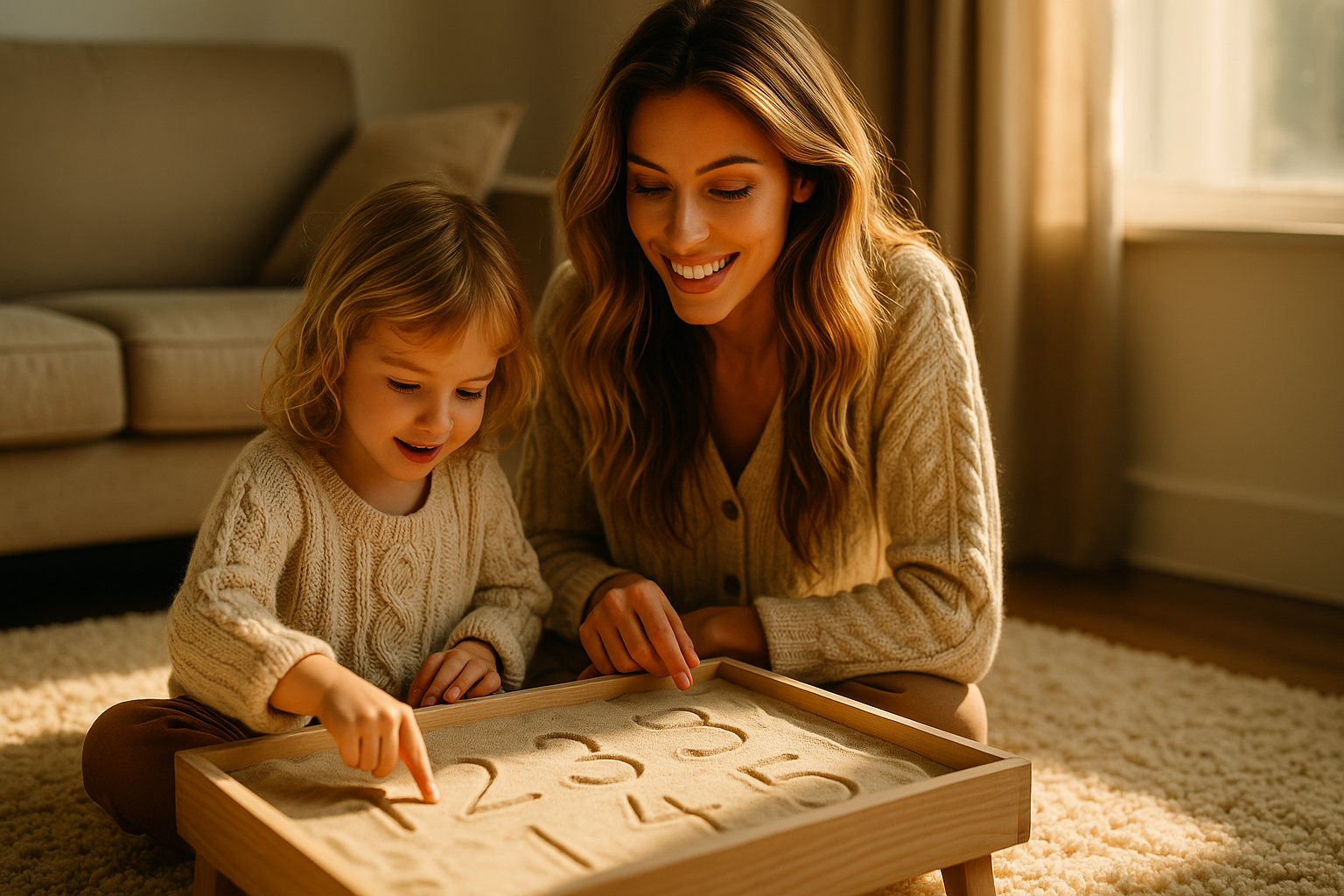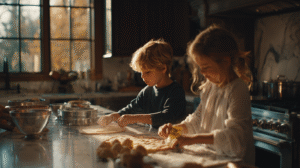
Morning Calendar Math: A Daily Routine to Build Number Sense
Morning Calendar Math: A Daily Routine to Build Number Sense As a former elementary math teacher turned homeschooling mom, I

“Mom, I keep writing my 3s backwards!”
My first-grader’s frustrated voice echoed from our kitchen table, where homework battles were becoming a nightly routine. As a former middle and high school math teacher, I thought I’d seen every learning struggle imaginable. But watching my six-year-old wrestle with something as basic as number formation reminded me that even the simplest math concepts can feel overwhelming to young minds.
That evening, as I tucked my kids into bed, I remembered something from my teaching days that I’d almost forgotten—the power of hands-on, tactile math activities. This kind of multi-sensory learning wasn’t just effective for my teenage algebra students—it could be exactly what my little ones needed too.
The next morning, I pulled out a simple baking dish and filled it with sand from our sandbox. What happened next completely transformed how we approach early math in our house.
Within minutes of tracing numbers in that grainy surface, both my first-grader and my curious four-year-old were fully engaged. No tears, no frustration—just pure discovery and joy. It was a clear reminder that tactile math activities don’t require fancy tools or expensive programs—just a little intention, some creativity, and a willingness to let kids explore math with their whole bodies.

Sand writing taps into what child development experts call multi-sensory learning pathways. When children trace numbers in sand, they’re engaging their visual, tactile, and even auditory senses as their fingers create that gentle scratching sound. This creates multiple neural connections that reinforce learning far more effectively than traditional paper-and-pencil methods.
This is why sand writing has become one of our favorite tactile math activities at home. I’ve watched both my kids naturally slow down when their fingers meet sand. There’s something magical about the texture that encourages deliberate, mindful movements. My four-year-old, who usually races through everything, actually takes time to feel each curve and line as she forms her numbers.
The resistance that sand provides also strengthens those crucial fine motor skills. Every stroke builds the small muscles in their hands and fingers while providing proprioceptive feedback that helps them understand pressure and control. These skills transfer directly to pencil grip and writing confidence later on.
🧠 Teacher Tip: The slower pace of sand writing naturally prevents the rushed, sloppy number formation that often leads to persistent bad habits!
Creating your tactile math activities station couldn’t be simpler. I use a standard 9×13 baking dish filled with about half an inch of fine sand from our local hardware store. The key is choosing sand that’s fine enough to show clear number shapes but not so powdery that it creates dust clouds every time little hands dive in.
For mess-conscious parents (and I totally get it!), I place our sand tray on a large beach towel or plastic tablecloth. This simple step contains any spillage beautifully. My kids have learned to gently shake the tray side to side to “erase” their work, which they find almost as satisfying as the writing itself.
I keep our sand writing station on a low shelf in our learning corner where both kids can access it independently. This has been game-changing for their confidence—they can dive into tactile math activities any time inspiration strikes, whether during formal learning time or spontaneous moments of curiosity.
🧠 Teacher Tip: Try colored sand to make number patterns more exciting! We mix in a tiny bit of food coloring occasionally for special practice sessions.
Starting with proper modeling has proven most effective in our house. I begin each new number by demonstrating the formation myself, narrating every movement as I trace. “Start at the top, make a straight line down, then across for the number 1,” I say, slowly forming each stroke. This verbal guidance is an essential part of our tactile math activities, helping kids internalize both direction and intent.
We begin with large motor movements using the whole hand, then shift to more precise finger writing as control improves. My first-grader started by sweeping full-hand gestures across the sand, but months later, she confidently uses just her index finger to form crisp, legible numbers.
When my four-year-old creates a wobbly 8 that resembles a snowman, I focus on celebrating the attempt. That encouragement keeps her eager to continue. In the world of tactile math activities, progress often comes through play, not perfection.
🧠 Teacher Tip: Let kids use a craft stick or small paintbrush if finger tracing becomes frustrating—you’re still preserving that tactile feedback!
Beyond number formation, tactile math activities like sand writing unlock powerful conceptual learning. We turn our tray into a math lab—writing numbers, using buttons or shells to match quantities, and even creating number stories.
Patterns are easier to spot in the sand. My kids love writing sequences like 2, 4, 6, 8, or exploring odd and even numbers. These tactile experiences turn abstract concepts into something they can literally feel.
When my daughter compares 6 and 9 side by side, noticing how they look “kind of the same but not really,” I know we’ve hit a teachable moment. That’s the beauty of tactile math activities—they invite questions that lead to genuine mathematical thinking.
🧠 Teacher Tip: Turn your sand tray into a simple addition station. Write “2 + 3,” let kids count with real objects, then trace “5” into the sand.
Some children hesitate to touch sand at first. Don’t force it. Offer substitutes like salt, rice, or even shaving cream on a tray. These are all valid and effective forms of tactile math activities that can cater to different sensory preferences.
For children struggling with number directionality (like my backward-3 writer!), I add a small green dot in the top-left corner of the tray as a starting point. We also use different colored sands to guide strokes. Over time, we remove those cues as confidence grows.
Worried about mess? I get it. But here’s the secret: involve your child in the cleanup. We count scoops of sand as we store it, or sort small counting pieces by color and size. Even cleanup becomes part of the learning.
🧠 Teacher Tip: Keep a small handheld vacuum nearby—it’ll ease parent anxiety and give your child more opportunities for spontaneous tactile math activities.
The beauty of sand writing and other tactile math activities lies in their accessibility. No worksheets, no erasers, no pressure—just joyful, self-directed discovery.
Watching my kids develop number confidence through these simple, sensory-based tools reminded me of why I started teaching math: to make it real, joyful, and empowering.
Homework battles? Gone. Now when my daughter hits a tricky number, she doesn’t panic—she reaches for our sand tray. Because for her, math isn’t just numbers on a page anymore. It’s something she can touch, feel, and explore.
“In every grain of sand lies a number story waiting to be discovered—one finger trace at a time.”

Morning Calendar Math: A Daily Routine to Build Number Sense As a former elementary math teacher turned homeschooling mom, I

Brushing Teeth Countdown: 5 Powerful Fun Tips for Kids As a former math teacher turned mom of two, I thought

Cooking Fractions for Kids: 7 Fun & Tasty Ways to Learn Math Last Tuesday, my 8-year-old son Jake stared at
*Also read:
25 Brilliant LEGO Math Activities to Build Number Sense and STEM Skills at Home
Teach Kids to Tell Time: The Clock Game Every Parent Should Try at Home